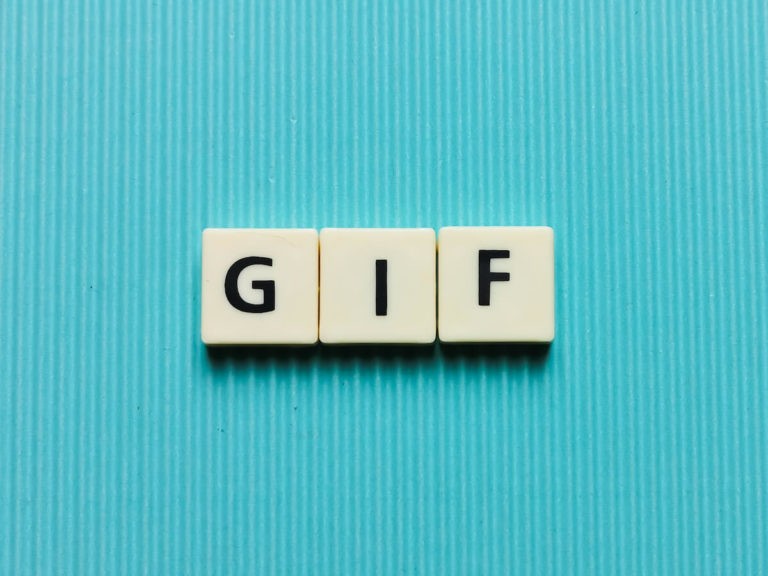The way the world consumes information has been quickly changing over the past dozen or so years. Plain text-based forms of delivering information are transforming into visual ones. The creation of platforms such as Facebook, Instagram, and Pinterest have proven the way videos and images can paint clearer pictures of a concept or feeling. When it comes to the classroom, exploring concepts or expressing emotions has been ignited with another graphic creation; enter GIFs and memes. What are GIFs and memes, why can using them be an effective classroom tool, and how can educators implement them as a way to understand cultures, demonstrate course concepts, and explore social commentary?
What are GIFs and Memes?
While memes and GIFs (pronounced “gif or “jiff”) often get lumped together as one and the same, technically they are slightly different. GIFs are animated images. While they have movement, they are not long video segments and more like the flipbooks you may have played with as a child. They don’t have any sound and often repeat themselves (much like the boomerang feature on Instagram).
Memes, on the other hand, are images embellished with text. They often relate to current events or social ideas. They can also be a block of text with no image attached, or they can have movement like a GIF does. So why can these moving images and text be effective in the classroom?
Why can Using Memes and GIFs be Effective?
Memes and GIFs can be an effective tool to use in the classroom for many reasons. For starters, GIFs and memes are a language students already speak. Imagine their surprise the first time the teacher uses one during instruction! Using memes and GIFs are sure to grab students attention, help them stay focused, and even add some lightheartedness to lessons. They are another way to get students to respond to discussion questions or to help the teacher better understand how they feel about a particular topic. Below are some additional ways to use memes and GIFs as classroom tools.
Way to Use Memes and GIFs as Classroom Tools
Icebreakers
A simple and entertaining way to use memes and GIFs in the classroom is for icebreakers. Pose a question to the students and have them choose a GIF or meme that would best represent their answer. “How was your weekend?” or “Use a GIF to show how you feel about our next science topic on plants.” Students will get a kick out of choosing a GIF and seeing their classmates’ responses.
Whether the GIF demonstrates joy, shock, or surprise, it can perfectly encompass how students feel in a less awkward way than putting it into words. Additionally, it will provide you with enlightening feedback. Someone had a terrible weekend? Best to check in with that student later. Nobody seems excited to learn about plants? How can you make the first few lessons more exciting to spark interest?
Reading Instruction
In English language arts, there are many ways to use GIFs and memes. When learning vocabulary words, have students write the definition and then add a GIF or meme that would best match that definition (good examples would include: exacerbant, infuriated, or disappointed). This creates a visual for the word and adds some flair to a normally tedious activity. Just finished a read-a-loud or a book study? Have students post a GIF or meme to reflect on the book, or create a journal of GIFs after every chapter to see how the book evolves.
Understanding and Exploring Society and Culture
GIFs and memes can help students when it comes to exploring society and culture. When political events are unfolding, have students search for GIFs and reflect on the ones they find. Teachers could even have their students research the history behind the GIFs they find (think Bernie Sanders or Donald Trump).
Searching for GIFs that positively or negatively portray a particular culture can also be a beneficial learning experience for students. How does the media portray white people, Black people, Christians, Muslims, etc.? Are there any underlying themes in the GIFs they find? Taking a look at GIFs or memes that were created can bring up some interesting conversations.
Explore Social Commentary
Piggy-backing off the use of GIFs and memes during political events, in general, GIFs are being extensively used for political and social commentary. Tumblr hosted a live #GIFOFF during the 2012 presidential election. The GIFs then transformed into memes that swept across social media and, in turn, influenced the narrative of the election. This topic can segway into educating students on digital citizenship and reminding them that their digital footprint is a permanent one StoryTelling in the GIF economy.
The way the world consumes information is continuing to evolve. Text-based forms of delivering information are transforming into visual ones as students and adults alike are using animated images and slogans in the form of GIFs and memes to more effectively get their viewpoints and feelings across. GIFs and memes are a way for educators to bring excitement to classrooms in a language students speak and feel comfortable using.




